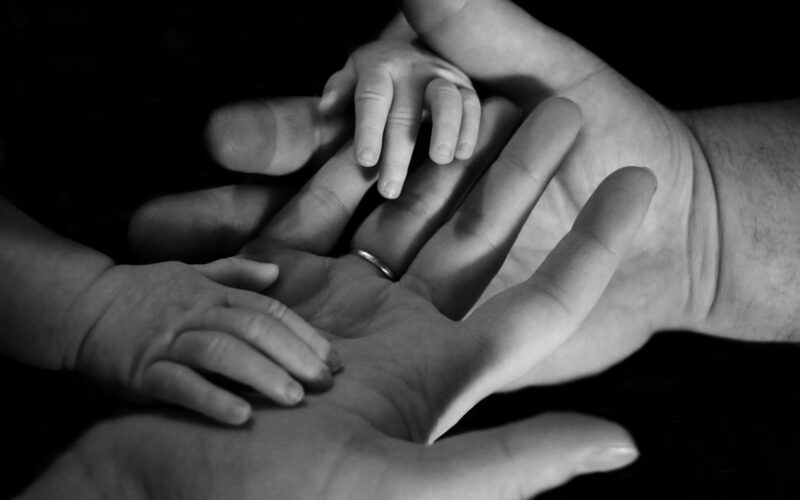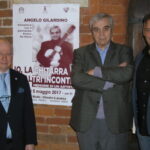In the complex fabric of society, the family stands as the fundamental cell, the foundation upon which values, affections, and the continuity of the species rest. However, the family is also a dynamic entity, one that changes and adapts to the fluctuations of culture and time. Forget traditional models, for the modern family is a kaleidoscope of possible compositions.
Traditional Families and New Forms
If we were to ask someone to mentally portray a family, the traditional image would likely emerge: a father, a mother, and their children. This is a familial structure that has stood the test of time, retaining both its allure and social function. As providers of emotional stability and keepers of cultural values, these families act as pillars upon which future generations rest.
However, society is a constantly evolving organism, and along with it, the family transforms. Some of these changes are the fruit of social progress, such as the acceptance and legalization of same-sex marriages. In these family units, love and support are no less valid or intense simply because the structure diverges from the norm. A couple of men or women can be equally capable of creating a healthy and loving environment for their children, whether they are biological, adopted, or born through surrogacy.
In the age of modernity, the family can take the shape of a mosaic, with pieces combining in unexpected yet harmonious ways. There are families where children are raised by a single parent, by loving grandparents, or even by close friends who become parental figures. Some families are a fusion of cultures and races, a melting pot where diversity is celebrated as an asset rather than seen as a divide.
New family forms not only reflect the complexity of society but also amplify its virtues. The openness to adoption by same-sex couples, for instance, not only provides a secure home for children in vulnerable situations but also represents a victory for inclusivity and equality.
And let’s not forget polyamorous families, where adults in consensual relationships with multiple partners build networks of affection and support. Though this configuration may seem radical, it highlights the core of what it means to be a family: a group of individuals who choose one another, sharing responsibilities and affections regardless of biology or social norms.
We can confidently state that the concept of family has expanded in ways that might have seemed unimaginable just a generation ago. But what remains constant through every metamorphosis is the family’s ability to offer love, comfort, and a sense of belonging that knows no bounds. In this way, the family continues to be the fundamental cell of society, even in its extraordinary diversity.
Extended Families and Beyond: A Mosaic of Relationships
If once the concept of family evoked a tightly knit and well-defined core, today the term expands like an umbrella capable of covering a variety of relationships and bonds. In extended families, the web of kinship surpasses the immediate confines of the nuclear family to embrace grandparents, uncles, aunts, cousins, and sometimes even friends who take on a parental role.
These extended families often serve as the glue holding generations together through the sharing of stories, traditions, and, not least, deep mutual affection. For example, grandparents can act as a bridge between past and present, offering wisdom and unconditional love. Uncles, aunts, and cousins, on the other hand, add an additional dimension of support and camaraderie, enriching the lives of the younger generation with experiences and lessons that go beyond what parents alone can offer.
It is not uncommon for close friends, neighbors, or external figures to find their place in the extended family, becoming indispensable presences in the lives of individual members over time. In some instances, these “family friends” can be more present and influential than actual relatives, testifying to the fact that blood isn’t the only bond capable of generating genuine family connections.
And what about blended families, where marriage or cohabitation between adults who are already parents give rise to an amalgam of children, half-siblings, and stepsiblings? Here, the concept of brotherhood is redefined, enriched by new dynamics and opportunities for mutual learning and growth. Challenges may be manifold, indeed, but the success of these families lies in their ability to overcome them, weaving a richer and more complex tapestry of emotional relationships.
In this overview, it becomes clear that the extended family is not a mere appendage to the nuclear family but a crucial element for social cohesion and emotional well-being. It serves as an anchor in a rapidly evolving world, providing a sense of belonging and continuity that transcends blood ties.
So, while the concept of family continues to evolve, one thing remains certain: its essence is not defined by the number of its members, nor by their biological relationship, but by the quality of love and support they exchange. In this context, the extended family stands as a vivid testament to the human capacity for love, in all its shades and complexities.
Adoption as an Act of Love: Beyond Biological Conventions
In a society that often venerates the blood bond as the undisputed glue of family, adoption emerges as a revolutionary act of love. It’s a gesture that transcends biological conventions, revealing a profound truth: family is a construction of the soul more than the body, a crucible in which love, in all its forms, finds a way to express itself.
Adoption is often perceived as a secondary option or a Plan B for those who cannot have biological children. However, for many people, adoption is a conscious and desired choice, the result of an emotional and reflective process that prioritizes the need to provide a secure and loving environment for a child in need. It’s not an act of charity, but a declaration of intent: love doesn’t require shared genes to manifest in all its potency.
This is particularly evident in adoptions by single parents, homosexual or lesbian couples, who debunk the preconceived idea that a family unit must have a specific configuration to function. In these cases, adoption is not just an act of love towards the child, but also an act of resistance against prejudices and stereotypes. These parents challenge social norms to build families founded on respect, understanding, and above all, unconditional love.
Families that open themselves to international adoption or welcome children with special needs tell a similar story. Here, the act of adoption extends hands across geographical borders and cultural barriers, or goes beyond physical and mental limitations, to assert that every life is worthy of love and opportunity.
But the road to adoption is not without hurdles. Each adopted child carries with them a suitcase of emotions and experiences that require sensitivity and patience from the new parents. And the parents themselves must navigate a sea of bureaucracy, social judgments, and their own doubts and fears. However, once these challenges are overcome, what remains is an undeniable reality: a family bound not by biological happenstance, but by the deliberate choice to love.
Therefore, adoption is not just an alternative to procreation but a pure manifestation of the very essence of family. It is the assertion that love, in its most authentic form, knows no boundaries, laws, or labels. It is living proof that family is not just a birthright but a right of choice, where each member is connected to the other not by a thread of DNA, but by an indestructible thread of affection and care.
LGBTQ Families: Love as the Glue and the Right to Raise Children
In a world that has long viewed family through the prism of preset models, same-sex families emerge as bastions of a new understanding of love and union. At the core of these families is an unmistakable and powerful message: love is universal, and it has the right to express itself in all its forms, including parenthood.
LGBTQ couples, far from being anomalous or secondary, today represent an increasingly visible and recognized face of society. Many of them share the same visceral desire to become parents that drives heterosexual couples. And thanks to advances in law and medicine, these couples now have more tools than ever to realize this desire, from adoption to surrogacy to assisted fertilization.
But beyond procedures and protocols, what makes a family is not the circumstances of birth, but the constant and unconditional presence of love, support, and guidance. In this, non-heteronormative families are no different from any other kind of family. Parents nourish, educate, encourage, and support their children with the same dedication and passion as any other parent. And the children, in turn, grow up in environments where love is not just preached, but practiced as the highest of values.
Certainly, like all families, these also have to navigate the obstacles and challenges of daily life. Society, despite progress, is still far from being universally welcoming. Prejudices and discrimination persist and can manifest in ways both blatant and subtle: from the difficulty of finding an accepting school to the misunderstanding of relatives and friends, to the discriminatory rhetoric still too prevalent in public discourse.
However, it is precisely in overcoming these challenges that these families demonstrate the robustness and resilience of their love. They fight for the rights of their children, educating them in empathy and inclusivity, and teaching them the invaluable worth of diversity. And in doing so, they contribute to building a more open and tolerant society, where the essence of family is measured not by conformity to certain external standards, but by the quality and depth of the love that binds it.
Ultimately, LGBTQ families are not just a symbol of change or an exception to the rule. They are a living testament to the fact that love is the only glue needed to form a family, and they have as much right as any other family unit to offer their children an environment in which to grow, learn, and flourish.
Childless Families: Redefining the Concept of Completion
In popular culture, the family is often portrayed as an incomplete picture without the presence of children. However, a growing awareness is rewriting this narrative, highlighting that a family’s completeness is not necessarily tied to procreation. Childless families are slowly gaining the visibility and recognition they deserve, challenging archaic notions and presenting themselves as an alternative but equally valid model of a family unit.
For many couples, the decision to not have children is the result of careful reflection, not a void to be filled. These families value the freedom, autonomy, and opportunities that life without offspring can offer. Spontaneous trips, fulfilling careers, and quality time with the partner become integral parts of their lifestyle.
The reasons behind this choice can vary: some couples are motivated by professional aspirations or life projects that do not include parenthood; others may have environmental or ethical considerations. In any case, the decision is often supported by a strong couple bond that does not feel the need to be validated or extended through the birth of a child.
It should not be forgotten the fundamental role that these families often play within the community and the broader family network. Not having their own children, they can devote time and energy to grandchildren, friends, and community initiatives, enriching the lives of those around them in different but equally meaningful ways.
And what about couples who would like to have children but face medical obstacles or other impediments? Even in these cases, the absence of children does not make the family any less authentic or meaningful. Love and mutual support remain the backbone of the family unit, and these couples often find other avenues to express their caregiving vocation, whether through adopting pets, engaging in social or volunteer activities, or creating deep emotional bonds outside of the family circle.
In summary, childless families challenge traditional definitions, showing that family, like the love that constitutes it, is an elastic and multifaceted concept. What matters is not so much the numerical composition of the family unit, but the quality of the relationships that animate it. And by this measure, a childless family can be just as complete, fulfilling, and rich in love as any other.
In conclusion...
In a world that’s increasingly interconnected and complex, the meaning of “family” is constantly evolving. Yet, at the heart of every family configuration, there is one unchanging principle: love. It’s love that fuels our spirit, guiding us through life’s storms. And ultimately, it is love that defines family, no matter its shape.
In this ongoing metamorphosis, the family remains a beacon of humanity, adapting to changes without ever losing its essence. And within this essence, each of us finds a small universe made of affection, understanding, and above all, unconditional love.








